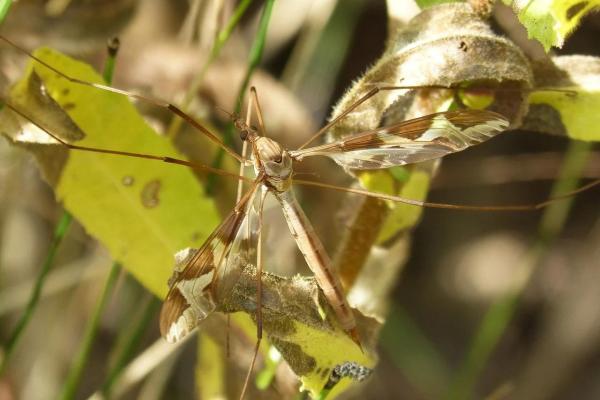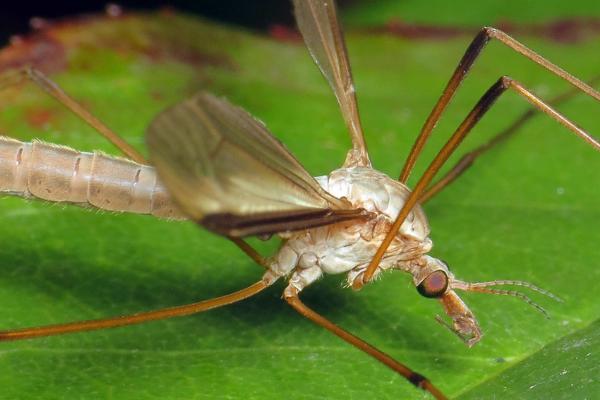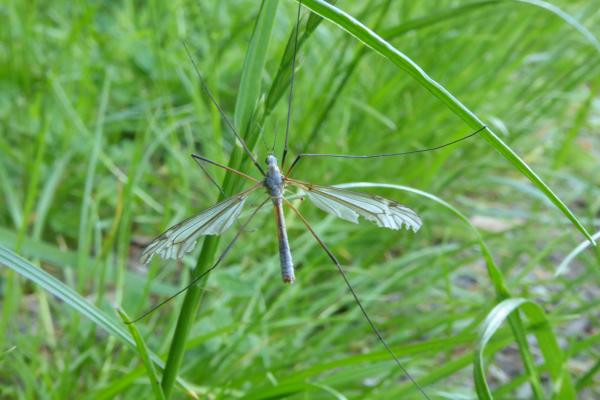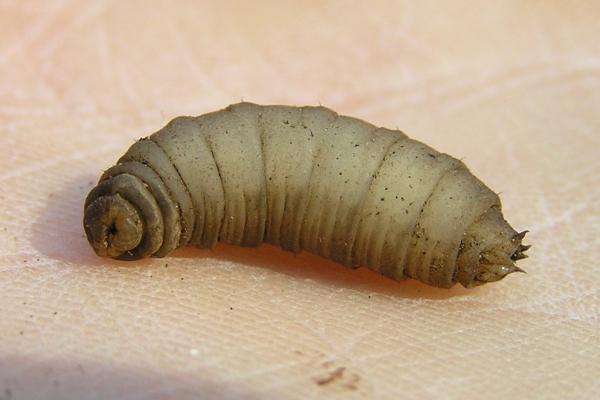Crane flies (Tipula oleracea) are flying insects with very long, slender legs that often resemble giant mosquitoes. However, unlike mosquitoes, crane flies are harmless and do not bite humans. Many people confuse them with mosquitoes and mistakenly believe they pose a threat. This article will help you understand more about crane flies, their characteristics, whether they bite, and what they eat, as well as their important ecological role.

Characteristics of Crane Flies
Habitat of Crane Flies
Diet of Crane Flies
Reproduction of Crane Flies
Crane flies are sometimes called “giant mosquitoes that don’t bite” because of their similar appearance: elongated bodies and very long legs. However, they belong to a completely different insect group. Key characteristics include:
No wing scales: Unlike mosquitoes, crane fly wings lack scales, and their thorax has a distinctive V shape.
Wing posture: They hold their wings open when at rest.
Long, thin, fragile legs: Their legs have short fine hairs and can easily detach if touched.
Slender, elongated body: Color ranges from gray to yellow; body length averages around 5 cm, but the overall size appears larger when including their legs.
Sexual dimorphism: Females are plumper due to carrying eggs, while males are slimmer.

Crane flies inhabit almost all environments but are usually found near freshwater sources or moist, damp soils. Different species are restricted to specific geographic regions. Tropical species can reach up to 10 cm in length, whereas temperate species tend to be smaller.
Since the 1930s, crane flies have expanded into new regions and become pests in pastures and grasslands. Their larvae feed on roots and plant material, causing vegetation loss. Affected regions include:
Germany
Belgium
United Kingdom
France
Spain
United States
Mexico
Canada
It is believed that crane flies spread to America by sand transported on ships. Changes in soil fertility and drainage allowed larvae to survive and overpopulate these areas.
Crane flies do not feed on blood like mosquitoes and have no biting apparatus. Therefore, they pose no danger to humans, and even if you see one on you, it cannot bite.
Adults: Feed mainly on liquids such as nectar; some species do not feed at all during adulthood due to short lifespans.
Larvae: Feed on plant roots and leaves and can become agricultural pests.
Larvae play an essential role in ecosystems by breaking down organic matter, enriching soil, and aerating it through underground tunnels.

Crane flies reproduce via internal fertilization. Mating can occur on the ground or during flight. They are oviparous, with females using an ovipositor to lay eggs into the soil, often near clover roots.
Larvae develop underground, emerging briefly at night to feed on grass leaves and roots. The absence of clover is often an indicator of a crane fly larva infestation.
Larvae are hardy, able to withstand light frost and brief flooding. However, drought conditions are detrimental. After the larval stage, they pupate in a sealed chamber, where they do not feed and undergo metamorphosis using stored energy. Once mature, adults emerge to reproduce, starting the cycle anew.

If you want to learn more about crane flies and similar insect species, please visit our Wildlife section.
Bibliography
García, A. M. (2011). Origin and evolution of the meadow crane fly pest: primary nucleus, limiting agents. Pastos, 12(2), 265-271.
animal tags: Crane Flies
We created this article in conjunction with AI technology, then made sure it was fact-checked and edited by a Animals Top editor.